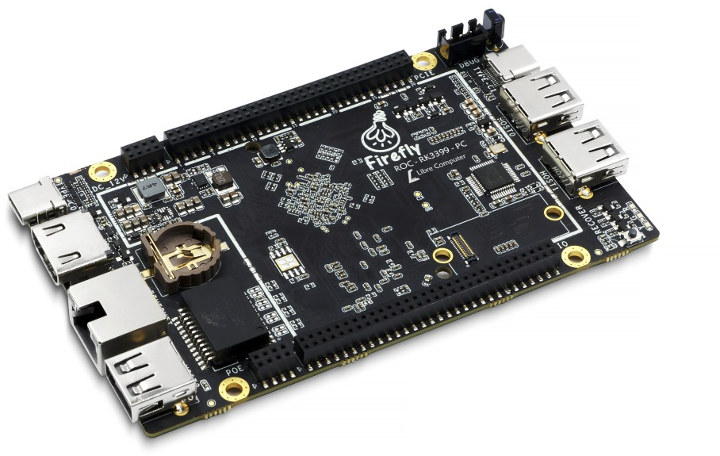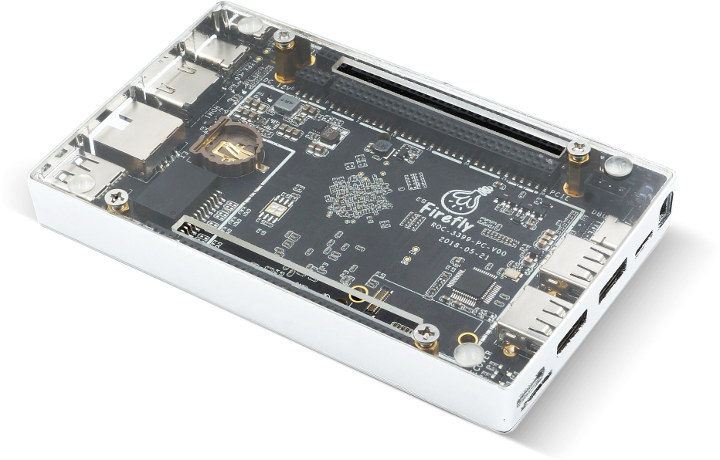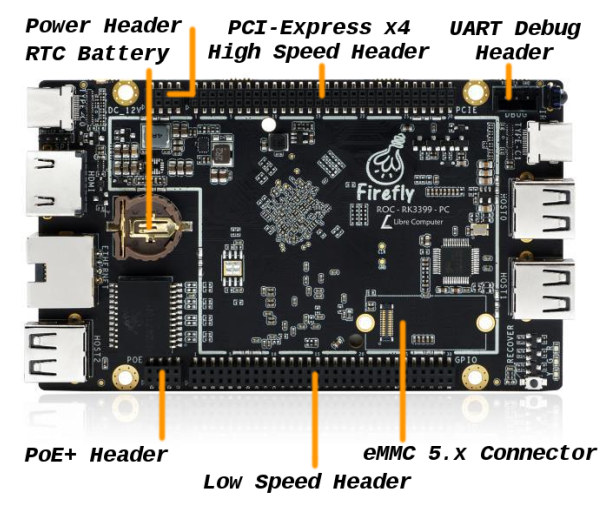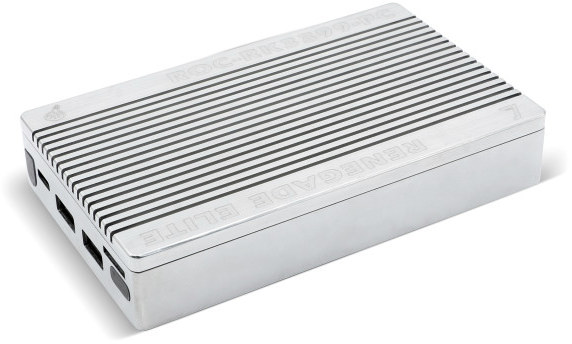Libre Computer and Firefly Team previously collaborated on Renegade (ROC-RK3328-CC) board powered by a Rockchip RK3328 quad core Cortex A53 processor and mostly following Raspberry Pi 3 form factor. We already knew both companies worked again on another Rockchip RK3399 single board computer, and were expected to launch it in July via a crowdfunding campaign.
The good news is that Libre Computer has just launched Renegade Elite (aka ROC-RK3399-PC) SBC on Indiegogo.

Renegade Elite board specifications:
- SoC – Rockchip RK3399 hexa core processor with 2x Arm Cortex-A72 @ up to 2.0 GHz + 4 Arm Cortex-A53, Arm Mali-T860MP4 with OpenGL ES 1.1 / 1.2 / 2.0 / 3.1 / 3.2 and OpenCL 1.2 support
- System Memory – 4GB LPDDR4 SDRAM
- Storage – eMMC 5.x interface for storage modules up to 128GB, micro SD card slot, and 128Mbit SPI NOR flash
- Video Output / Display I/F
- HDMI 2.0 connector
- Embedded DisplayPort (eDP) interface
- Up to 2x MIPI DSI Interfaces (one shared with MIPI CSI)
- Audio
- Camera – Up to 2x MIPI CSI interfaces (one shared with MIPI DSI)
- Connectivity – Low profile Gigabit Ethernet RJ45 port with optional Power-over-Ethernet (PoE) support
- SB – 1x USB 3.0 Type C with DisplayPort + Power Delivery, 1x USB 3.0 Type C with DisplayPort, 3x USB 2.0 Type A ports
- Expansion
- 60-pin PCI-E Expansion Header
- 60-pin Low Speed Header
- Debugging – UART Header
- Misc – IR Receiver, RTC with battery backup
- Power Supply – Via USB type C port
- Dimensions – 120 x 72 x 11.9 mm
Renegade Elite will support Linux based operating systems like Debian, Arch, Ubuntu, Fedora, OpenSUSE, Android 8.1, and more. Supported Linux kernel versions will include Linux mainline 4.19 or greater, and Linux 4.4 from Rockchip SDK. The company will also provide a UEFI-capable GUI bootloader stored in the SPI flash for network boot.
The board will ships in a CNC aluminum + acrylic case that also serves as a heatsink to keep the processor and board cool for stable operation.

Renegade Elite with CNC case is offered for $99 plus shipping which adds $12 to the US, and $16 to the rest of the world. Delivery is expected in September 2018.
It is the only reward available right now, but the company however plans to add more rewards soon such as a Mezzanine with 802.3at PoE+, 4 lane PCI-E M.2 up to 22110, USB/SDIO M.2 (Non-PCI-E) 2230 for WiFi, more CNC enclosures, a WiFi, MIPI DSI and eDP touchscreen displays, a MIPI CSI camera module, some eMMC modules, USB-PD power supplies, and stackable rack kits with aluminum heatsinks.

Jean-Luc started CNX Software in 2010 as a part-time endeavor, before quitting his job as a software engineering manager, and starting to write daily news, and reviews full time later in 2011.
Support CNX Software! Donate via cryptocurrencies, become a Patron on Patreon, or purchase goods on Amazon or Aliexpress






